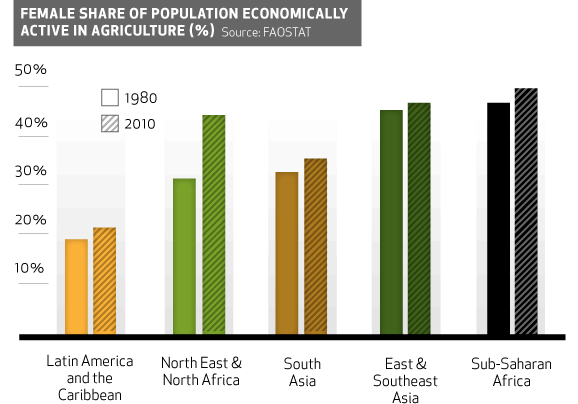When you think of your food growing, who do you picture? If it’s a grizzled old Andy Griffith character, you’re probably not alone. But you’re missing a big part of the picture.
Last night, one of the favorite Super Bowl Ads was #LikeAGirl, an online video that spread last summer. The video has now taken a simple message to the big game: being #LikeAGirl is an awesome thing.
It also sparked some of our favorite agriculture tweets of the night.
Which brings us to the faces of the people growing your food. The USDA census reports that women make up 14 percent of principal farm operators and 30 percent of all farm operators. Globally, the International Center for Research on Women (ICRW) reports that rural women produce half of the world’s food. In developing countries, women grow between 60 percent and 80 percent of food crops.
So why does it matter how much we know about the men and women growing our food in the US and all over the world? First of all, leveraging the science and technology expertise of women is vital for agriculture. Global demand for food is growing. The agriculture field needs sharp, innovative, and passionate people to help meet this demand. If young women aren’t exposed to the many roles for them in agriculture, they’ll be lost to other industries.
Secondly, it is difficult for women to gain benefits from agricultural training and resources if they aren’t being counted as farmers. Women around the world have more limited access to land, technology, financial services, education, and markets than men. Resulting, their agricultural yields are lower. The Food and Agriculture Organization (FAO) estimates that, if women had equal access to resources, it reduce the number of hungry people by 100-150 million.
Food production may feel far away, but around the country and the world hardworking men and women are making sure it’s done safely, affordably, and-yes-deliciously. They’re driving tractors, caring for livestock, and harvesting the food you need. And many of them are doing it #LikeAGirl.
This blog was written for the Alliance to Feed the Future.
The header includes a photo by Marji Guyler-Alaniz of FarmHer.com, originally shared via Modern Farmer Magazine.

